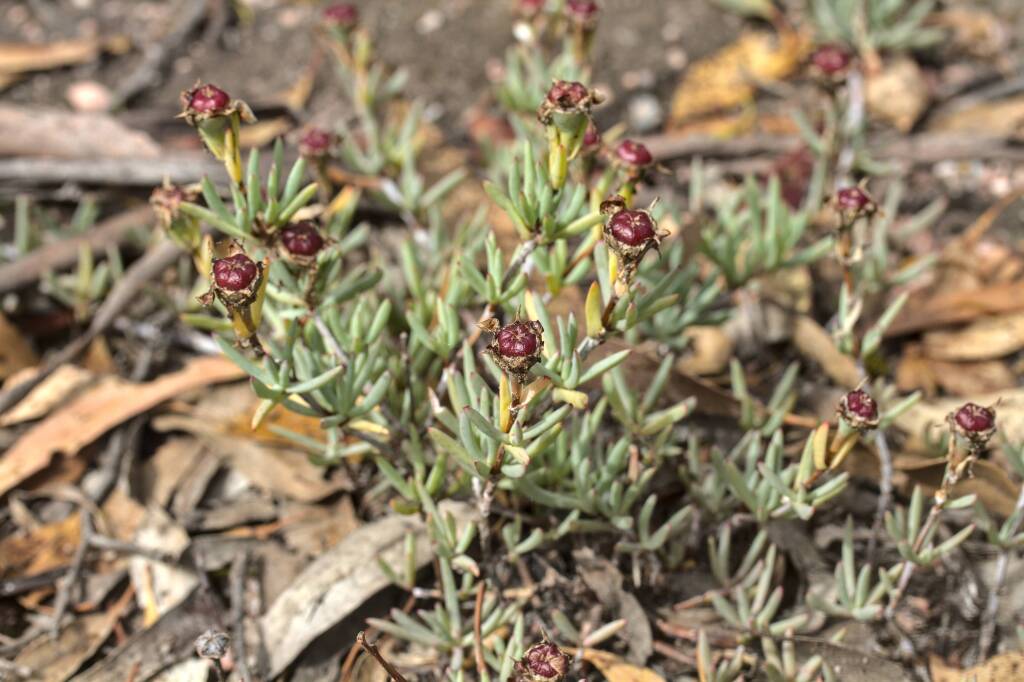Lampranthus multiradiatus
(Jacq.) N.E.Br.Erect to decumbent subshrub to 25–40 cm high, occasionally rooting at nodes; branches and leaves often red-dotted. Leaves linear, acuminate, triquetrous to subterete, 10–20 mm long, 2–3 mm wide, subglaucous. Flowers terminal, in small cymes or solitary, 40–50 mm diam.; pedicel 10–45 mm long; receptacle obconic, 5–7 mm long; sepals triangular to ovate, c. 10 mm long, 3 broader than others and with membranous margins; staminodes white, pink, rose or magenta, c. twice as long as sepals, filamentous staminodes absent. Capsule obconic, 10–13 mm long, apex convex to concave prior to dehiscence; seeds c. 2.5 mm long, pale brown. Flowers Nov.–Dec.
VVP, VRiv, GipP, CVU. Also naturalised NSW. Native to South Africa. Persisting and now spreading from an old garden into native vegetation in Long Forest Nature Conservation Reserve near Bacchus Marsh, degraded roadside at Fyansford, and in coastal cliff-top scrub among Pomaderris paniculosa subsp. paralia at Jan Juc.
 Spinning
Spinning


